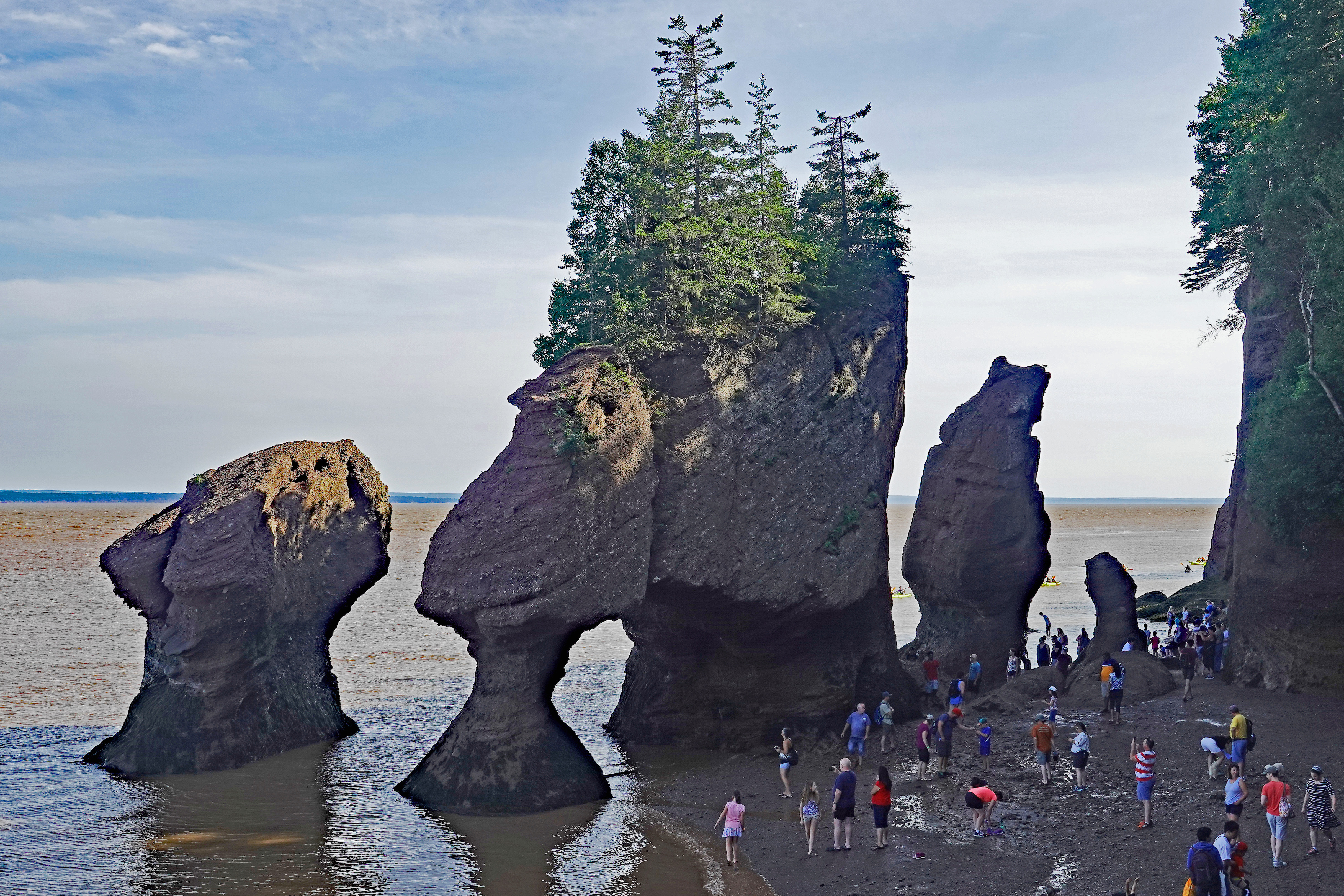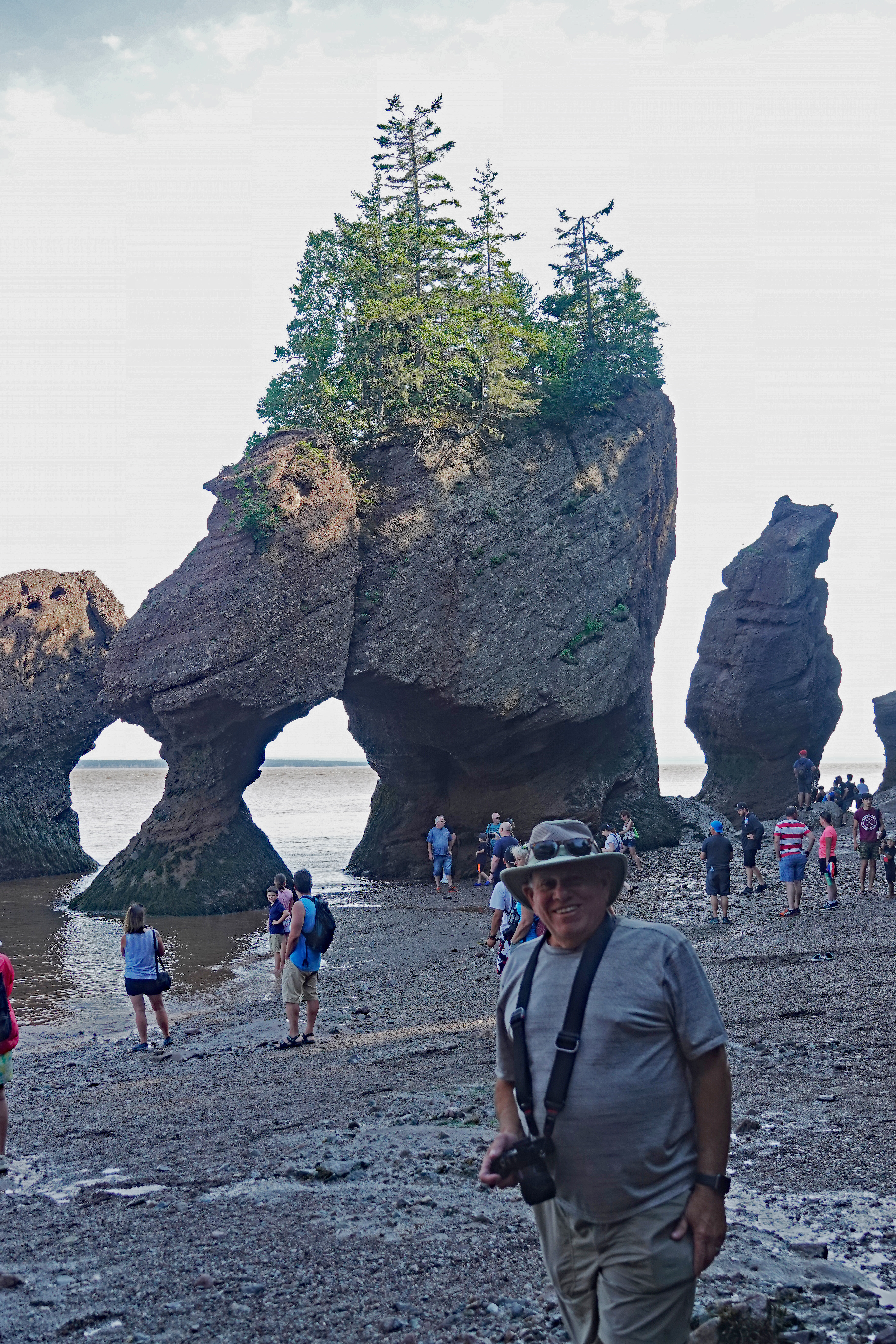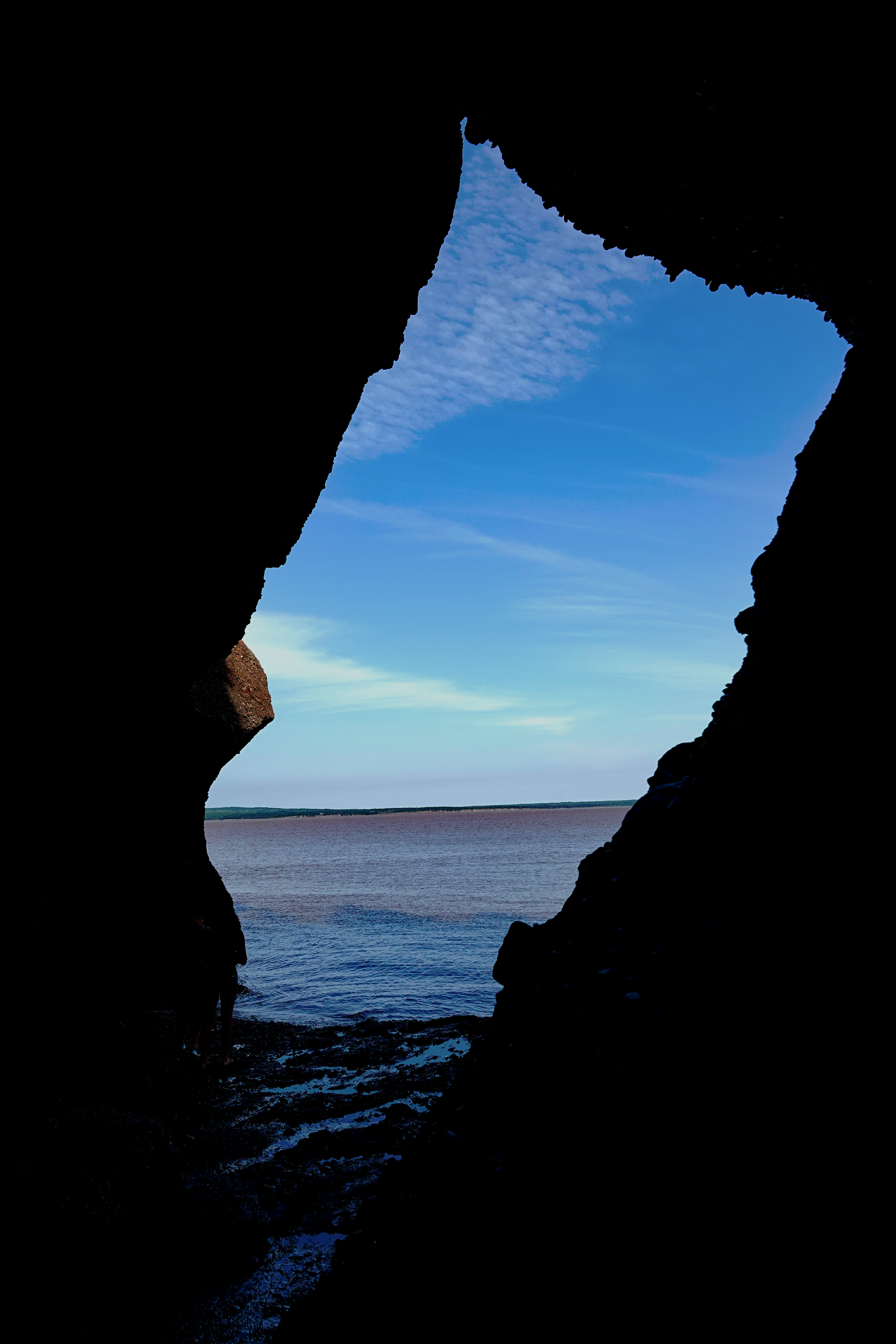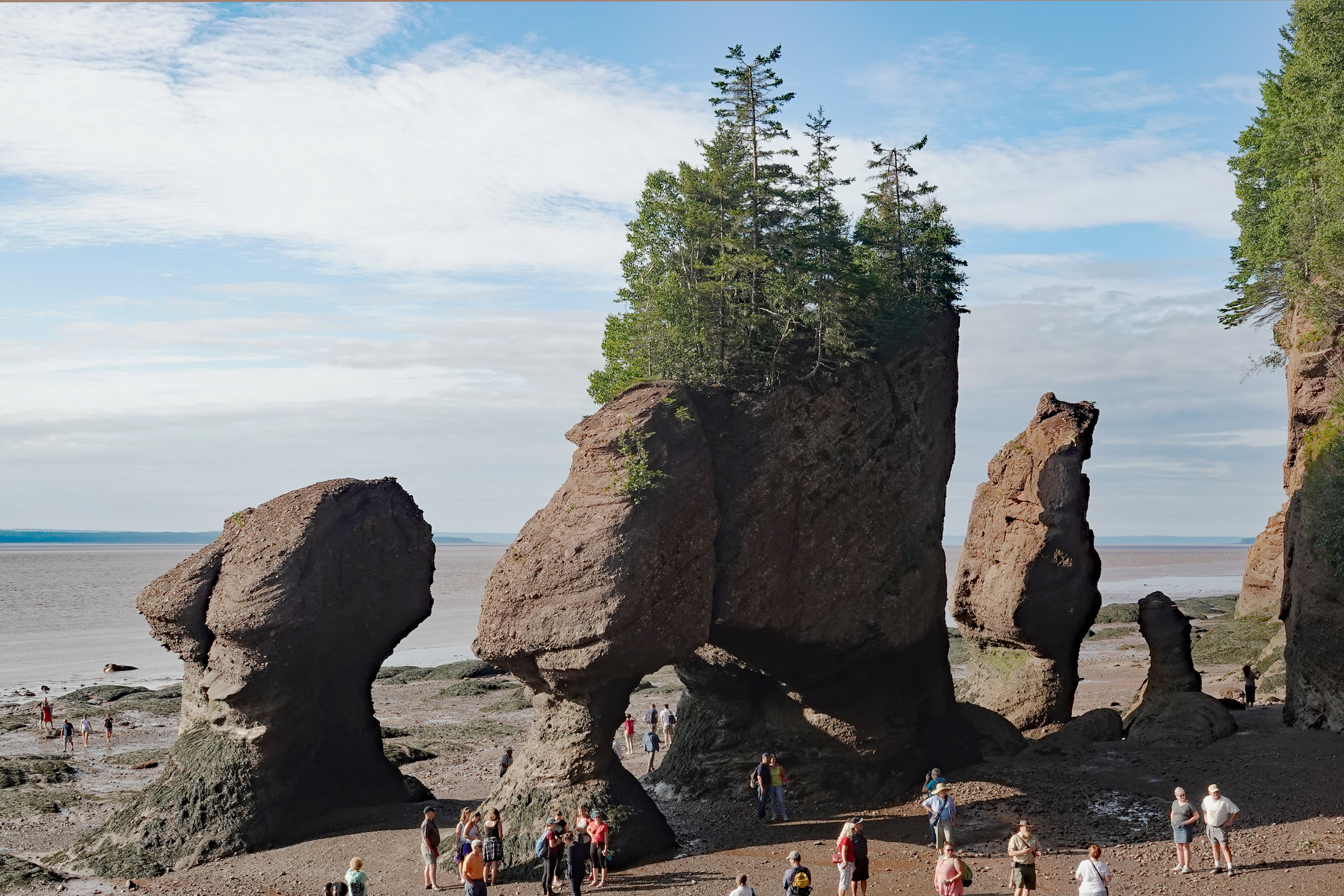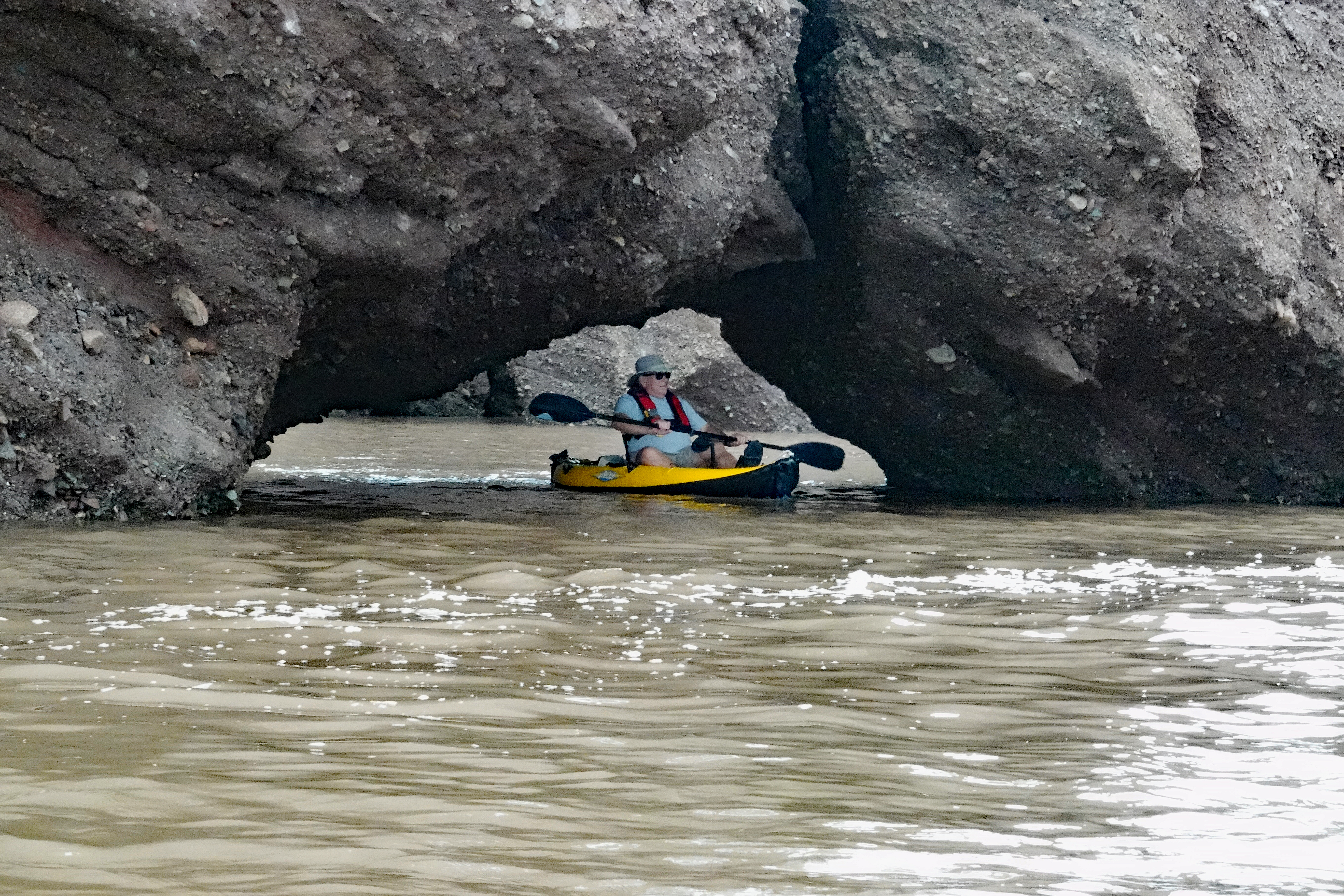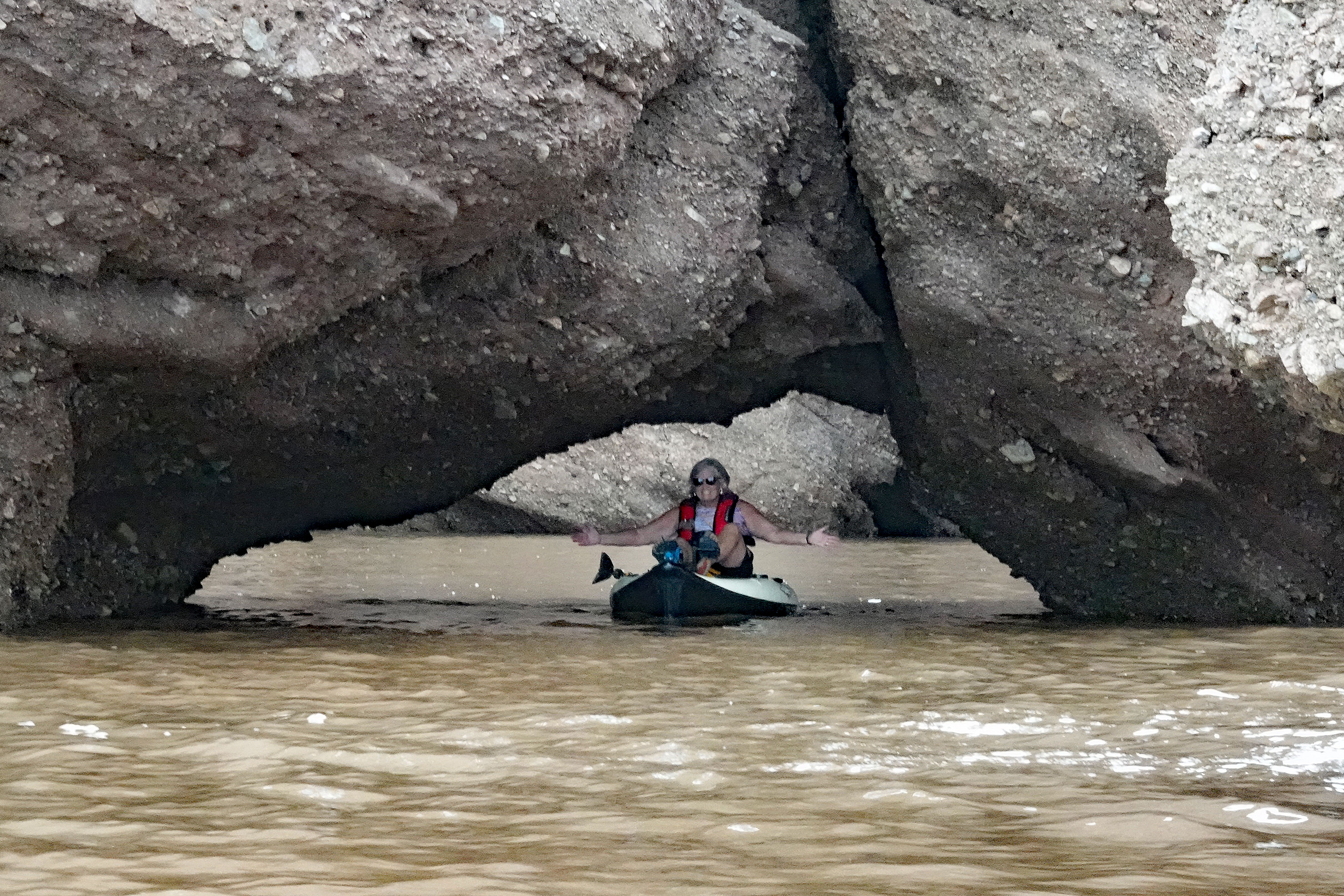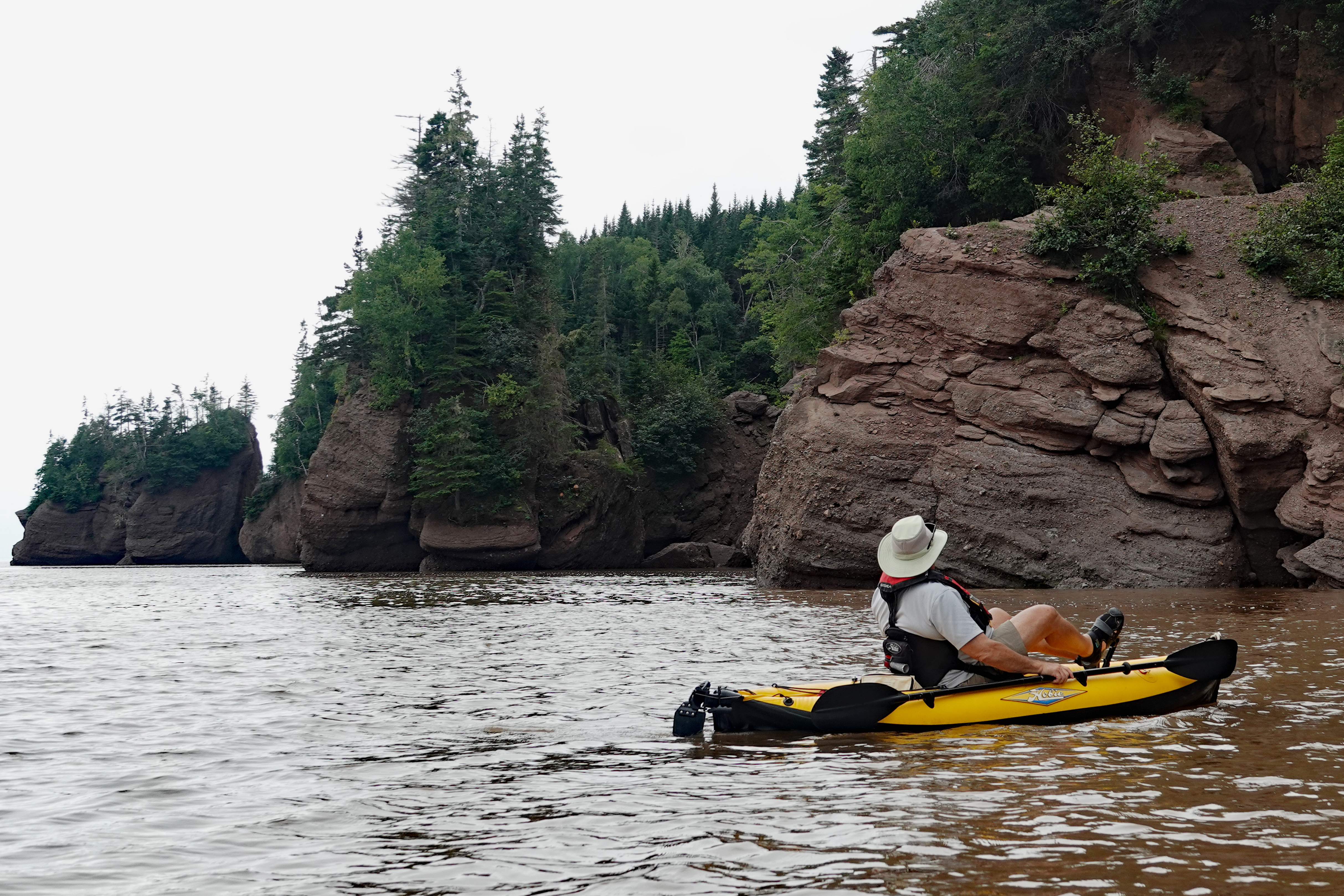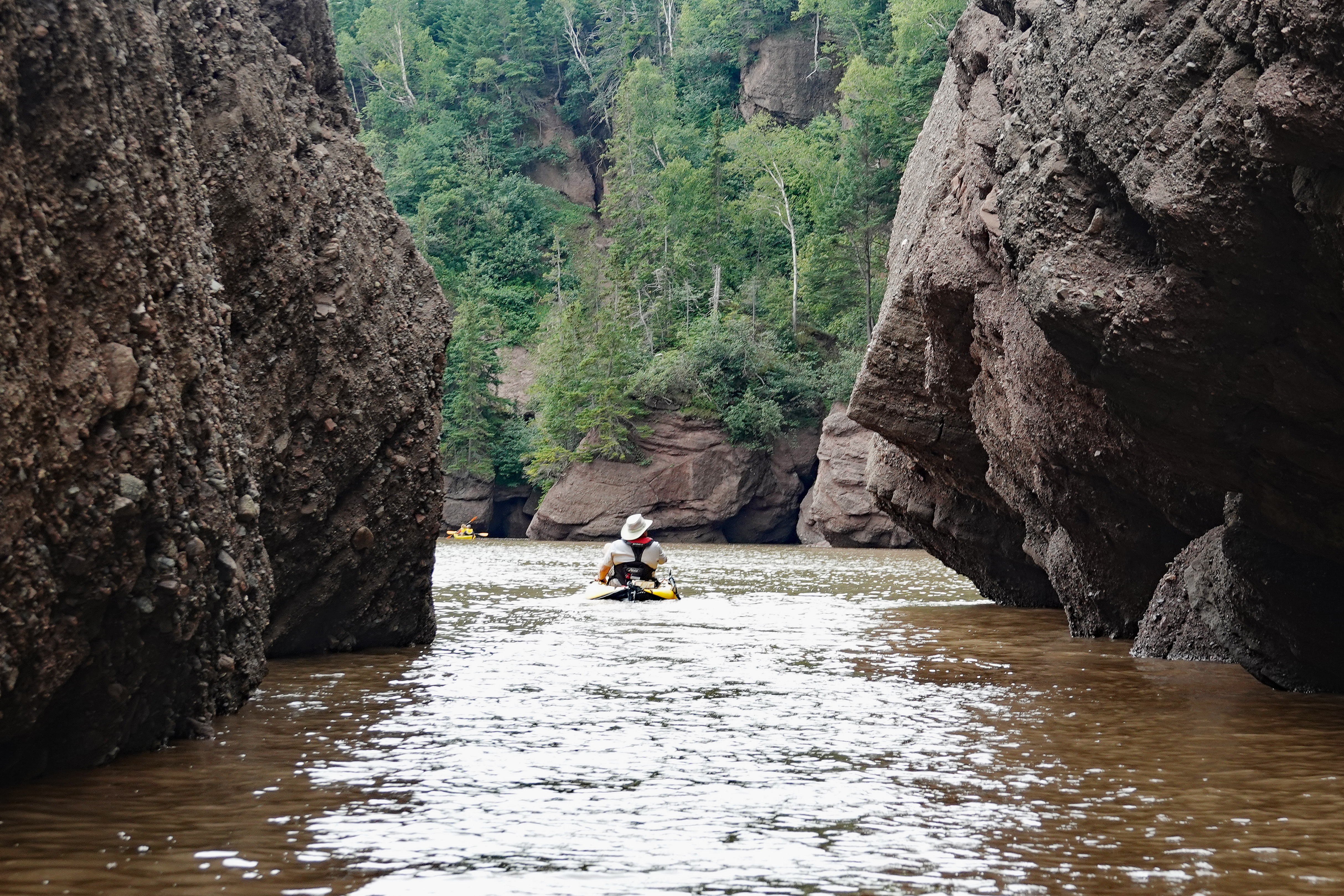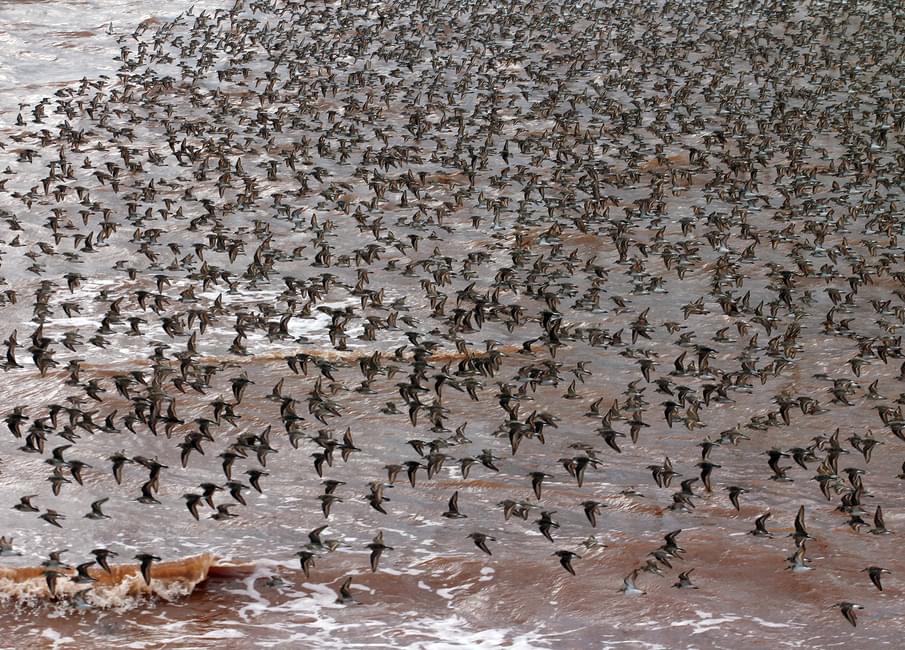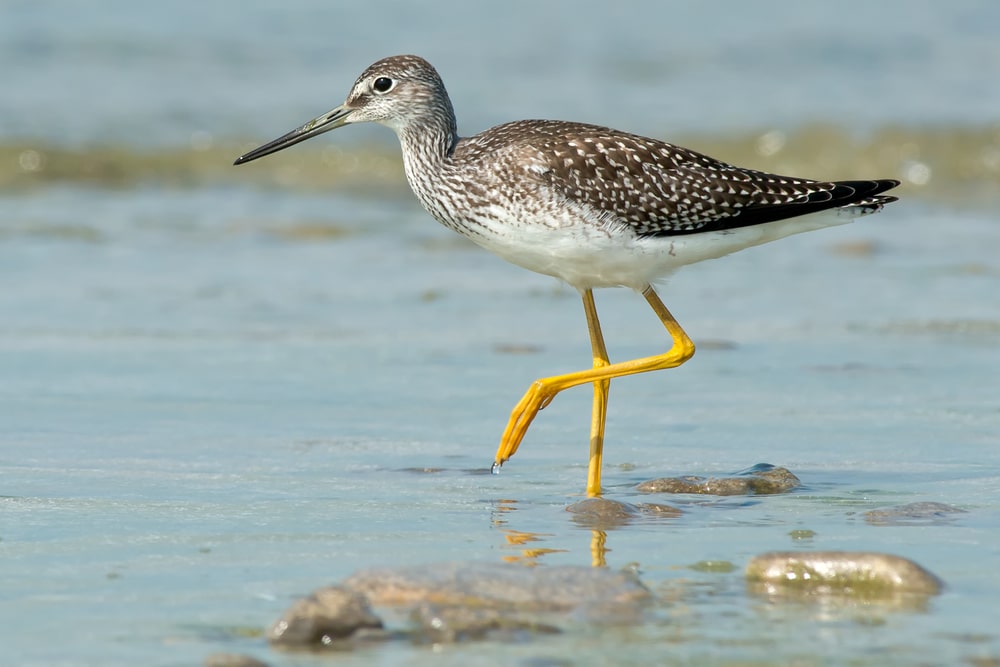Hopewell “Flowerpot” Rocks, is one of the most spectacular places to experience the Bay of Fundy in all of New Brunswick. The famous, towering flowerpot rocks were created by the winds and tides over millions of years. The late cartoonist/entrepreneur Robert Ripley of Ripley’s Believe it or Not saw the urn-shaped, vegetation-topped rocks in 1936, thought they looked like giant flower pots and gave them their vivid name.
The Bay of Fundy is 170 miles of craggy cliffs, thundering waves, and ecological wonders. The size of the funnel shaped bay helps create the world’s most extreme tides. Water levels rise and fall by as much as 48 feet every day when tons of seawater crash into the shore. See photo showing the tide change for August 13.
The park ranger explained “We get 160 billion tonnes of water in and out of the Bay of Fundy each tide, you would need to collect the water that thunders over Niagara Falls for one year and nine months to be seeing the same amount that we get in and out daily here.” You’re going from bare ground to fifty feet of water every six hours. Nothing gentle and leisurely about the ebb and flow of these tides.
With narrow stalks of soil and bulbous tops, the rocks form fantastical, asymmetric shapes. They are topped with tufts of trees and greenery. It’s as if they’ve been carved by a giant sculptor with a taste for whimsy; the giant sculptor is the sea itself.
“The soil has a unique composition-a mix of sediment and sandstone. They’re both soft and easily eroded.” He indicates the very tops of the formations. “Combine that with a top layer of firm soil and high tides that range between twenty-five and fifty feet, and this is what you get.”
Part of the Hopewell Rocks experience is a beach walk along the ocean’s floor among the flowerpot-like formations. We had timed our visit so we could take a guided tour of the area when the tide was completely out. Here you are literally walking on the ocean floor. We happened to visit with the new moon, which also means the largest differential in tidal extremes. We were greeted by a team of scientists who asked visitors to spread out at the waters’ edge. With the lowest tide (minus 1 foot) out for only 10 minutes or so once a month, scientists are researching “life at the edge”. So 60 volunteers spread out to help search for/document the types/numbers of creatures (soft shell crabs and worms) existing in that small strip of ecosystem. Visually, the mud flats were one of the highlights of our visit, you can peer out at a vast landscape of mud that is exposed due to the falling tide.
Visiting Hopewell Rocks isn’t quite complete until you return at high tide to venture around the formations by kayak. Jokingly referred to as obstacle kayaking, threading your way thru narrow openings and openings in the rock. The big difference though, was the number of people around. When we were kayaking among The Rocks, there was no one else in sight. It was surreal having such a beautiful place to ourselves. Paddle alongside cliffs that plunge from the green forests of Fundy National Park into the Bay, drift into the wave-carved sea caves, and take a rest on one of Fundy’s hidden beaches that are swallowed twice daily by the highest tides in the world. The Bay of Fundy is a UNESCO Biosphere Reserve that features extraordinary rock formations that are scoured by the tides. View the rugged coastline and the amazing land and marine ecosystems at sea level.
Reaching the launch site we were treated to the sight of thousands of Sandpipers – or at least I think that’s what they were as they make up the bulk of the two million shorebirds that visit the Bay of Fundy every summer. They come to the Bay of Fundy to fuel up on the nutrient rich mudflats for their trip to South America. It was a treat to see them – even from a distance. I really fell in love with these little birds, catching them in their annual migration down south. I couldn’t peel my eyes away from the absolutely majestic scenery.




